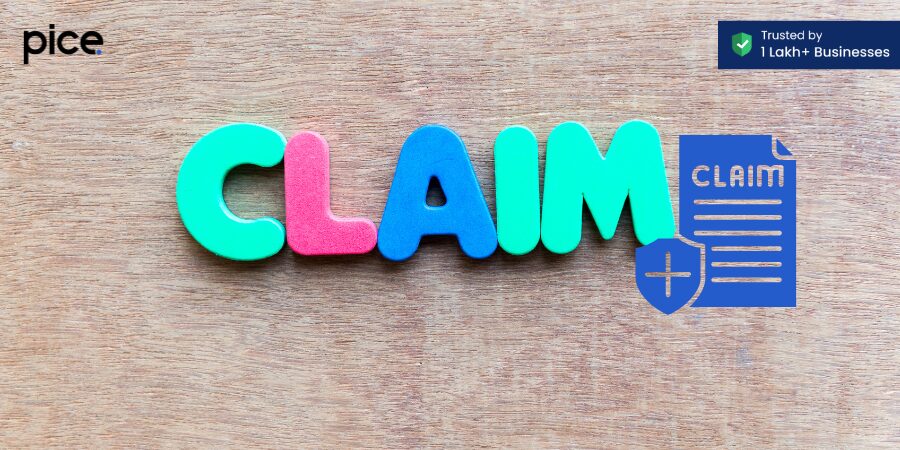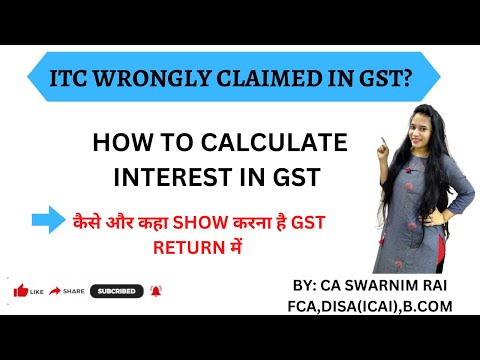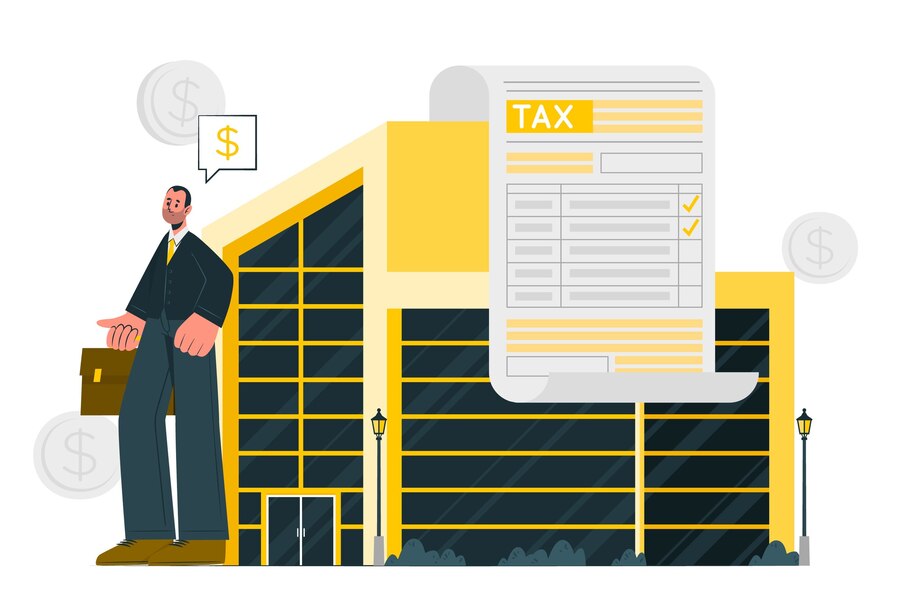Key Takeaways
- ITC reversal involves nullifying ineligible or excess input tax credits claimed.
- Report ITC reversals in Table 4B of the GSTR-3B return and pay any additional tax.
- Excess ITC claims often arise from clerical errors or misunderstanding eligibility.
- Promptly correct wrong ITC claims by identifying, calculating, and reporting reversals.
- Proper ITC reversal ensures GST compliance and avoids penalties.
In the complex world of goods and services tax (GST), input tax credit (ITC) plays a crucial role in reducing the tax burden on businesses. However, errors in claiming ITC can lead to excess claims, which necessitate reversal to maintain compliance. The GSTR 3B, a self-declared summary GST return that taxpayers file monthly, is one of the key documents for this purpose. This article provides a comprehensive guide on how to reverse excess ITC claimed in GSTR 3B.
What is an ITC reversal under GST?
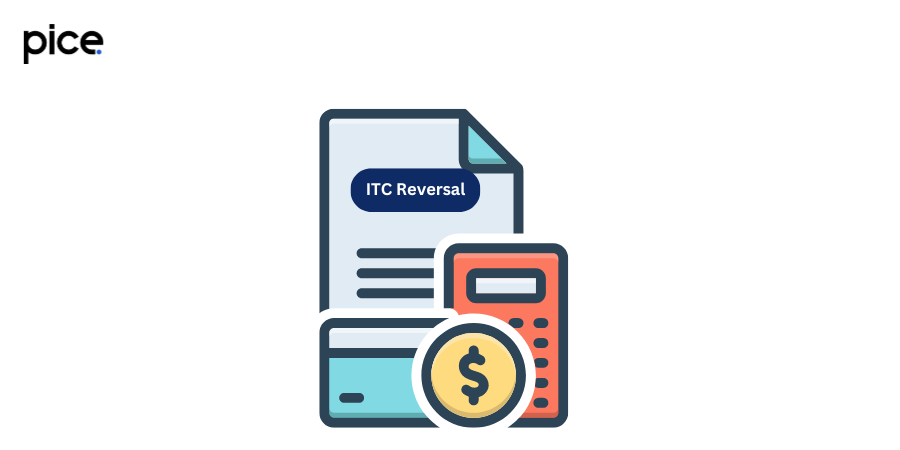
ITC (Input Tax Credit) Reversal under GST (Goods and Services Tax) refers to the process where a taxpayer has to reverse the credit they had previously claimed on their inputs, input services, or capital goods. This reversal is necessary under specific circumstances outlined by the GST laws. Some common situations that may require ITC reversal include:
- Non-payment to Suppliers: If a taxpayer fails to pay the supplier for the goods or services received within 180 days from the date of the invoice, they need to reverse the ITC claimed. If the payment is made later, the taxpayer can reclaim the ITC.
- Goods or Services Used for Exempt Supplies: If goods or services initially intended for taxable supplies are later used for exempt supplies, the ITC claim on such inputs needs to be reversed proportionately.
- Change in Business Use: If the nature of the business changes and the goods or services, initially intended for taxable purposes, are used for non-business or personal purposes, the ITC claim on such goods or services must be reversed.
- Capital Goods Sold or Scrapped: When capital goods on which ITC was claimed are sold or scrapped, the ITC claimed needs to be reversed as per the prescribed formula under the GST law.
- Input Tax Credit Mismatch: If there is a discrepancy between the ITC claimed by the taxpayer and the ITC reflected in the supplier’s GST return (GSTR-2A or GSTR-2B), the taxpayer may need to reverse the unmatched ITC.
- Cancellation of GST Registration: Upon cancellation of GST registration, any ITC lying in the credit ledger needs to be reversed.
How is ITC excess claimed?
Excess ITC (Input Tax Credit) claims can arise due to various reasons, often stemming from clerical errors, misunderstandings about eligible ITC, or incorrect reporting. Here are some common scenarios that may lead to claiming excess ITC and the steps to rectify them:
Common Scenarios Leading to Excess ITC Claims
- Claiming ITC on Exempt Supplies:
- Issue: ITC should not be claimed on goods or services that are exempt from GST. However, due to oversight or misunderstandings, taxpayers might mistakenly claim ITC on such supplies.
- Solution: Review the GST rate and applicability for all purchases. Regularly cross-check the input purchases with the list of exempt supplies.
- Incorrectly Claiming ITC on Inputs Used for Personal Consumption:
- Issue: ITC is only allowed on goods or services used for business purposes. If inputs are used for personal consumption, claiming ITC on these items is not permitted.
- Solution: Maintain clear records separating business and personal expenses. Ensure that only business-related purchases are included in ITC claims.
- Claiming ITC on Non-Business-Related Expenses:
- Issue: Similar to personal consumption, ITC cannot be claimed on expenses not related to the business operations, such as personal trips or non-business-related utilities.
- Solution: Implement strict accounting practices to differentiate between business and non-business expenses.
Consequences of Excess ITC Claims
Excess ITC claims can result in significant repercussions for businesses, including:
- Financial Penalties:
- Incorrect ITC claims can attract penalties under GST laws. The penalties can be substantial, affecting the financial health of the business.
- Interest on Excess ITC:
- Businesses are required to pay interest on the excess ITC claimed at a prescribed rate. This adds to the financial burden and can lead to cash flow issues.
- Legal Action:
- Persistent or fraudulent excess ITC claims can result in legal action, including prosecution. This can lead to further penalties, fines, and even imprisonment in severe cases.
- Reputational Damage:
- Repeated errors or fraudulent claims can damage the reputation of the business, affecting relationships with clients, suppliers, and regulatory authorities.
Steps to Rectify Excess ITC Claims
To mitigate the impact of excess ITC claims, businesses should:
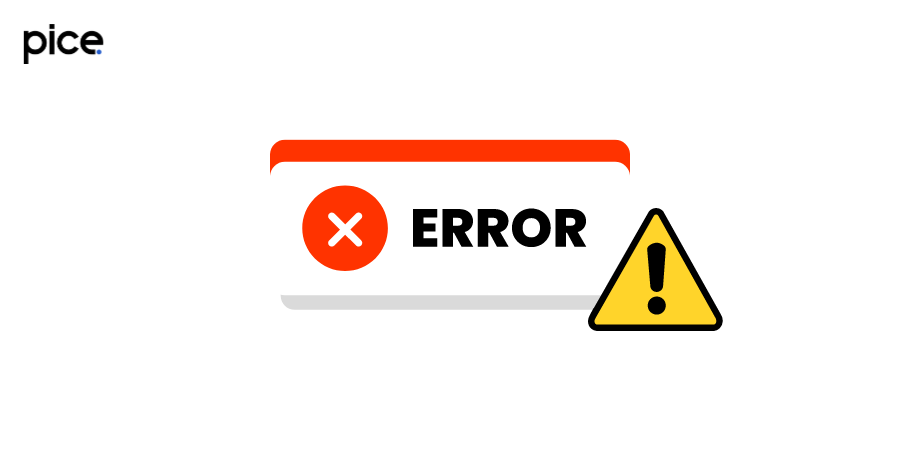
Step 1: Conduct Regular Audits
- Perform regular internal audits to identify and rectify discrepancies in ITC claims. This helps in early detection of errors and prevents escalation.
Step 2: Reconcile ITC Claims
- Regularly reconcile ITC claims with the suppliers’ data (GSTR-2A or GSTR-2B) to ensure accuracy. Any mismatches should be promptly addressed.
Step 3: File Amendments
- Use the subsequent GSTR-3B returns to amend any excess ITC claimed. The reversal should be done in the filing period in which the error is discovered.
Step 4: Consult with Professionals
- Engage with GST consultants or tax professionals to ensure compliance with GST laws and to get guidance on complex issues related to ITC.
- Use GST Compliance Software
- Implement GST compliance software to automate the process of ITC calculation and reconciliation. This reduces human error and enhances accuracy.
How to reverse the wrong ITC claimed in GSTR 3B?
Reversing the wrong ITC (Input Tax Credit) claimed in GSTR-3B involves a systematic approach to ensure compliance with GST regulations. Here’s a detailed guide to the steps involved:
Steps to Reverse Wrong ITC Claimed in GSTR-3B
Step 1: Identify the Error:
- Review Records: Thoroughly scrutinize your purchase invoices, accounting records, and GSTR-2A/GSTR-2B statements to identify where the excess ITC was claimed.
- Common Errors: Check for common errors such as ITC claimed on exempt supplies, personal consumption, or non-business-related expenses.
Step 2: Prepare Documentation:
- Gather Documents: Collect all relevant documents that support the correction. This includes original invoices, purchase orders, and any correspondence with suppliers.
- Detailed Explanation: Prepare a detailed explanation of the error, including how it was identified and the reasons for the incorrect ITC claim.
Step 3: Adjust in Subsequent Returns:
- Report Reversal: In your subsequent GSTR-3B return, reduce the ITC amount by the excess amount claimed. This is done by adjusting the figures in Table 4 (Eligible ITC) of the GSTR-3B.
- Table 4(A): Enter the correct ITC amount eligible for the current month.
- Table 4(B): Report the amount of ITC reversal. This includes:
- 4(B)(2): ITC reversed due to ineligible ITC claimed in previous periods.
- Net ITC Available: Ensure the net ITC available after reversal is correctly calculated and reported.
Step 4: Record the Adjustment:
- Maintain Records: Keep detailed records of the adjustments made. This includes the supporting documents, the detailed explanation prepared, and the GSTR-3B return showing the reversal.
- Compliance Checks: These records should be readily available for any future compliance checks or audits by tax authorities.
Step 5: Pay Any Interest Due:
- Interest Calculation: Calculate the interest payable on the excess ITC claimed from the date of claiming the ITC to the date of reversal.
- Payment: Pay the interest amount through the GSTR-3B return or the GST portal, as applicable.
Step 6: Consult with a GST Professional:
- Seek Advice: If the error is complex or significant, consult with a GST professional or tax consultant to ensure accurate reversal and compliance with GST laws.
Example of Reversal Entry in GSTR-3B
Let’s assume you identified an excess ITC of INR 10,000 claimed in the previous return period. In the subsequent GSTR-3B, you would:
- Table 4(A): Enter the eligible ITC for the current month (e.g., INR 50,000).
- Table 4(B): Enter the ITC to be reversed (e.g., INR 10,000 in 4(B)(2)).
- Net ITC Available: The net ITC available would then be INR 40,000 (INR 50,000 eligible ITC – INR 10,000 ITC reversal).
How to Reverse ITC in GST?
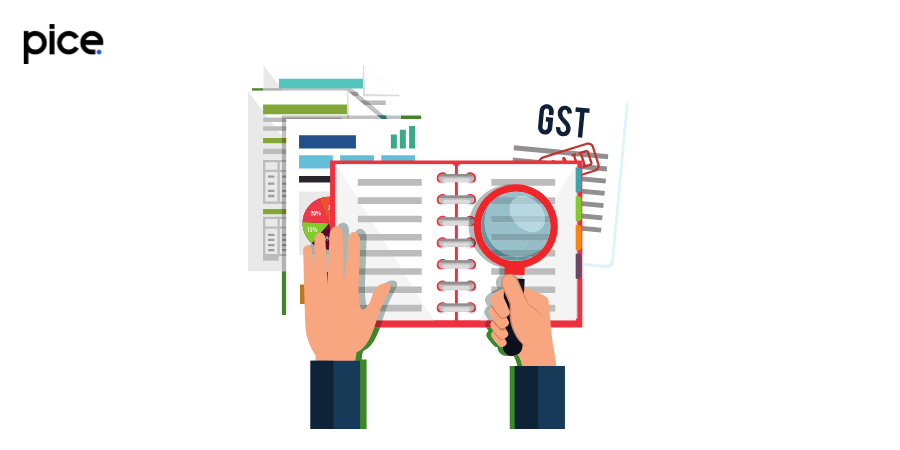
Reversing ITC (Input Tax Credit) in GST involves a systematic process to ensure compliance with the regulations. Here’s a detailed guide on how to reverse ITC in the monthly GSTR-3B return, including relevant keywords:
Steps to Reverse ITC in GST
Step 1: Review the ITC Ledger:
- Electronic ITC Ledger: Regularly review your electronic credit ledger on the GST portal. This helps in identifying any discrepancies and ensuring that the claimed ITC is accurate and eligible.
- Reconciliation: Reconcile your ITC ledger with purchase invoices, GSTR-2A, and GSTR-2B statements to detect any excess or ineligible ITC claimed.
Step 2: Calculate the Excess ITC:
- Determine Amount: Calculate the exact amount of ITC that needs to be reversed. This includes identifying ITC claimed on ineligible items, personal consumption, or non-business-related expenses.
- Documentation: Gather all relevant documents that support the need for reversal, such as purchase invoices, accounting records, and any relevant correspondence.
Step 3: Report the Reversal:
- Table 4B of GSTR-3B: Enter the reversal amount in Table 4B of the GSTR-3B form. This is where the details of the ITC reversal are reported.
- 4B(1): ITC reversal due to non-payment of consideration within 180 days.
- 4B(2): ITC reversal due to other reasons, such as ineligible ITC claimed in previous periods.
- Net ITC Calculation: Ensure that the net ITC available after the reversal is accurately calculated and reflected in the form.
Step 4: Submit and Pay:
- Submit GSTR-3B: After making the necessary adjustments in Table 4B, submit the GSTR-3B form through the GST portal.
- Pay Additional Liability: If the reversal of ITC results in an additional tax liability, ensure that this is paid promptly. This can be done through the electronic cash ledger.
Conditions on Excess ITC Claimed in GSTR 3B and How to Reverse?
Certain conditions and thresholds apply when reversing excess ITC:
Conditions on Excess ITC Claimed in GSTR-3B
- Outward Supplies:
- ITC should only be claimed on inputs used for taxable outward supplies. Excess ITC claimed on exempt or non-GST outward supplies needs to be reversed.
- Credit on Inputs:
- ITC is allowed on inputs used for business purposes. Claiming ITC on inputs used for personal consumption or non-business-related activities is not permitted and must be reversed.
- Common Credit C2:
- Common credit refers to ITC on inputs used for both taxable and exempt supplies. The proportionate ITC attributable to exempt supplies should be calculated and reversed accordingly.
- Flow of Credits:
- Ensure a seamless flow of credits by accurately recording and reconciling input credits in the electronic credit ledger. Discrepancies in the flow of credits indicate the need for ITC reversal.
- Zero-Rated Supplies:
- ITC on inputs used for zero-rated supplies (exports) is allowed. However, excess ITC claimed beyond what is attributable to zero-rated supplies must be reversed.
- Supply Chain:
- Verify the ITC claimed at every stage of the supply chain to ensure accuracy. ITC wrongly claimed due to errors in the supply chain needs correction.
- Type of Output Supplies:
- Differentiate between types of output supplies (taxable, exempt, zero-rated) to determine the correct ITC eligibility and avoid excess claims.
- Capital Goods:
- ITC on capital goods should be claimed proportionately if they are used for both taxable and exempt supplies. Excess ITC claimed on capital goods requires reversal.
- Wrong Claim:
- Any wrong claim of ITC, either due to clerical errors or misinterpretation of eligibility, must be identified and reversed promptly.
- Regular Reconciliations:
- Conduct regular reconciliations of ITC with purchase records, GSTR-2A, and GSTR-2B to detect and correct excess ITC claims.
- Pro-Rata Basis:
- ITC should be calculated on a pro-rata basis for common inputs used for both taxable and exempt supplies. Excess ITC claimed beyond the eligible pro-rata amount must be reversed.
- Tax Period:
- Reversals should be made in the tax period in which the excess ITC was identified to avoid interest and penalties.
- Registered Person:
- Ensure that ITC is claimed only by the registered person to whom the invoices are addressed and who has received the goods/services.
- Annual Calculations:
- Annual calculations of ITC should be carried out to reconcile and adjust any discrepancies identified during the year.
- Raw Material:
- Ensure that ITC on raw materials is correctly attributed to taxable outputs and reverse any excess claimed for exempt outputs.
- Debit Note:
- Adjust ITC based on debit notes issued for returns or price reductions of inputs.
- Financial Institution:
- Financial institutions need to ensure ITC is claimed only on inputs used for taxable supplies as per GST regulations.
- Relation to Supplies Made:
- ITC should be directly related to supplies made during the period. A mismatched ITC must be reversed.
- Output Tax Liability:
- Excess ITC claimed can impact the output tax liability. Correct ITC claims help in accurately determining the net tax payable.
- GST Liabilities:
- Reversing excess ITC helps in accurate reporting of GST liabilities and avoids interest/penalty charges.
- Electronic Ledger:
- Maintain and regularly review the electronic credit ledger to ensure accurate ITC claims and timely reversals.
- Seamless Flow:
- A seamless flow of credit ensures that ITC is correctly claimed and utilized. Disruptions in this flow need to be addressed through reversals.
- Credit in respect:
- Ensure that ITC is claimed in respect of eligible supplies only. Reversal is required for ITC wrongly claimed.
- Credit Attributable:
- ITC should be attributed correctly to taxable and exempt supplies. Any excess credit attributed to exempt supplies needs reversal.
- Mismatched Credit:
- Address the mismatched credit between GSTR-2A and GSTR-3B promptly to avoid excess ITC claims.
- Tax Credit Attributable:
- Accurately calculate and attribute tax credit to eligible supplies, reversing any over-claimed amount.
How to Reverse Excess ITC in Regular Returns
- Review the ITC Ledger:
- Regularly review the electronic ITC ledger to identify any discrepancies or excess ITC claimed.
- Calculate Excess ITC:
- Determine the exact amount of ITC that needs to be reversed based on the reconciliation of records and eligible ITC.
- Report the Reversal:
- Enter the reversal amount in Table 4B of the GSTR-3B form.
- 4B(1): Reversal due to non-payment of consideration within 180 days.
- 4B(2): Reversal due to other ineligible ITC claims.
- Enter the reversal amount in Table 4B of the GSTR-3B form.
- Submit and Pay:
- After making the necessary adjustments, submit the GSTR-3B form and pay any additional tax liability resulting from the reversal. Ensure that the payment is made through the electronic cash ledger.
ITC Reversal Reporting in GSTR 3B

Reversing eligible input tax credit (ITC) in GSTR-3B is crucial for maintaining compliance under GST. Here’s a concise guide on how to report ITC reversals in the GSTR-3B return:
Steps to Report ITC Reversal
- Identify the Need for Reversal:
- Review financial records, purchase invoices, and ITC ledger to identify any excess or ineligible ITC claimed.
- Calculate the reversal amount:
- Determine the exact amount of ITC to be reversed. Gather supporting documents for the reversal.
- Access GSTR-3B:
- Log in to the GST portal and open the GSTR-3B form for the relevant tax period.
- Enter Reversal Details in Table 4B:
- Table 4B(1): For ITC reversed due to reasons such as ineligible claims.
- Table 4B(2): For other ITC reversals, including non-payment to suppliers within 180 days.
- Example Entry:
- If reversing INR 5,000 for ineligible ITC:
- 4B(1): Leave blank if not applicable.
- 4B(2): Enter INR 5,000.
- If reversing INR 5,000 for ineligible ITC:
- Submit the GSTR-3B Return:
- Review the form, submit it through the GST portal, and ensure the net ITC is correctly calculated.
- Pay Additional Tax Liability:
- If the reversal creates additional tax liability, pay it using the electronic cash ledger.
- Maintain Records:
- Keep detailed records of all ITC reversals and supporting documents for compliance and audits.
Calculation of ITC under Various Rules
Calculating ITC correctly involves understanding different rules:
- Rule 42: Pertains reversal of ITC on inputs/input services used for both taxable and exempt supplies.
- Rule 43: Deals with the reversal of ITC on capital goods.
- Rule 44: Applies when there’s a cancellation of GST registration or a switch to the composition scheme.
- Rule 44A: Specific to transitional ITC for gold dore bars.
Rule 42: Reversal of ITC on Inputs/Input Services
Rule 42 requires businesses to reverse ITC proportionately on inputs/input services used for making both taxable and exempt supplies. The formula involves calculating the common eligible credit and reversing the portion attributable to exempt supplies.
Rule 43: Reversal of ITC on Capital Goods
Under Rule 43, ITC on capital goods used for both taxable and exempt supplies must be reversed over a period of five years. The calculation involves determining the common excessive credit and reversing it in equal installments over the specified period.
Rule 44: Reversal of ITC in Case of Cancellation of GST Registration or Switches to Composition Scheme
Rule 44 mandates the reversal of ITC when a taxpayer cancels their GST registration or opts for the composition scheme. The ITC to be reversed is calculated on the closing stock of inputs, semi-finished goods, and finished goods.
Rule 44A: Balanced Transitional ITC to be Reversed on 1st July 2017 for Gold Dore Bars
Rule 44A specifically addresses the reversal of transitional ITC for gold dore bars as of 1st July 2017. Businesses must calculate the transitional credit available and reverse it accordingly.
Reporting of ITC Reversal in GSTR-9
For annual returns:
- Report ITC reversals in the appropriate tables of GSTR-9.
- Ensure that the amounts reported match those in the monthly GSTR 3B returns.
- Reconcile annual returns with monthly filings to avoid discrepancies.
Conclusion
Reversing excess ITC claimed in GSTR 3B is a critical compliance task that businesses must perform diligently. By understanding the rules and procedures, maintaining accurate records, and regularly reconciling ITC claims, businesses can ensure direct tax compliance and avoid penalties. Stay informed about the latest GST updates to navigate the complexities of ITC reversal effectively.
💡Learn more about how our Pice can help you make all your important business payments, like supplier and vendor payments, rent, GST, & utility, from one single dashboard with your credit card. Request a demo now.
FAQs
What does the reversal of ITC mean?
The reversal of Input Tax Credit (ITC) refers to the process of nullifying or adjusting the ITC that was previously claimed but is later found to be ineligible or excessive. This typically occurs due to non-payment to suppliers within a specified period, usage of inputs for exempt supplies, or personal use.
How to reverse the excess ITC claimed in GSTR-3B?
To reverse excess ITC claimed in GSTR-3B, identify the amount of excess ITC, and report it in Table 4B of the subsequent GSTR-3B form. Adjust the ITC amount by entering the reversal under the appropriate section, submitting the form, and paying any additional tax liability arising from the reversal.
How is ITC excess claimed?
Excess ITC is often claimed due to clerical errors, misunderstanding of eligible ITC, or incorrect reporting. Common scenarios include claiming ITC on exempt supplies, personal consumption, or non-business-related expenses. These errors need to be promptly corrected to avoid penalties.
How to reverse the wrong ITC claimed in GSTR-3B?
To reverse the wrong ITC claimed in GSTR-3B, review your records to identify the incorrect claim, calculate the amount to be reversed, and report this reversal in Table 4B of the next GSTR-3B return. Submit the revised return and pay any additional tax liability resulting from the correction.
What is an ITC reversal under GST?
ITC Reversal under GST involves reversing or adjusting previously claimed Input Tax Credit due to ineligibility, non-payment to suppliers, use of goods/services for exempt supplies, or personal use. This ensures business compliance with GST laws and avoids penalties for incorrect ITC claims.
